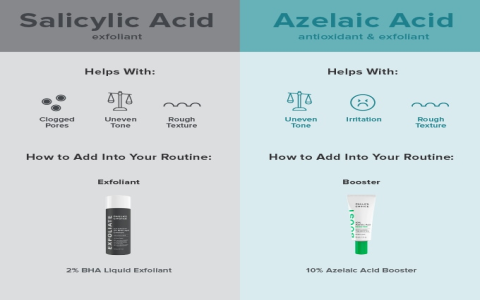Azelaic acid can indeed cause skin purging in some individuals. This phenomenon is primarily due to its mechanism of action, which encourages increased skin cell turnover.

Understanding Skin Purging
Skin purging is a temporary acne flare-up that can occur when you start using a new active skincare ingredient that accelerates skin cell renewal. As the rate of cell turnover increases, underlying microcomedones (clogged pores that are not yet visible) are brought to the surface more quickly. This can manifest as an increase in pimples, whiteheads, or blackheads.
Key characteristics of purging include:
- It typically occurs in areas where you frequently experience breakouts.
- Blemishes that arise during purging tend to resolve faster than typical acne lesions.
- The purging phase usually lasts between 2 to 6 weeks as the skin adjusts to the new ingredient.
How Azelaic Acid Works and Why It Might Cause Purging
Azelaic acid is a dicarboxylic acid with several beneficial properties for the skin, particularly for acne-prone and rosacea-prone individuals:
- Exfoliating (Keratolytic): It helps to normalize the shedding of skin cells and prevent the buildup of dead skin cells within the pores. This action is crucial for preventing comedone formation. It is this exfoliating property that can trigger purging by speeding up the process of bringing pre-existing clogs to the surface.
- Antibacterial: It exhibits antimicrobial activity against Cutibacterium acnes (C. acnes), a bacterium implicated in acne development.
- Anti-inflammatory: Azelaic acid reduces inflammation, which can help calm redness and irritation associated with breakouts and conditions like rosacea.
- Reduces Hyperpigmentation: It can inhibit tyrosinase, an enzyme involved in melanin production, helping to fade post-inflammatory hyperpigmentation (dark spots left after acne).
Because azelaic acid promotes cell turnover and helps to clear out pores, it can initially push existing blockages to the surface, leading to what appears as a new breakout – this is the purging process.
Differentiating Purging from a Negative Reaction
It’s important to distinguish purging from irritation or an allergic reaction:

- Location of Breakouts: Purging typically occurs in your usual breakout zones. If you experience breakouts in new areas where your skin is usually clear, it might be irritation.
- Duration: Purging is temporary. If breakouts persist beyond 6-8 weeks or worsen significantly, it could be a sign that the product is not suitable for your skin.
- Type of Reaction: Purging usually presents as more of your typical acne. If you experience severe redness, itching, burning, hives, or swelling, this is more likely an irritant or allergic reaction, and you should discontinue use and consult a dermatologist.
Managing Purging from Azelaic Acid
If you experience purging when starting azelaic acid:
- Start slowly: Introduce azelaic acid gradually. Begin by using it every other day or a few times a week to allow your skin to acclimate.
- Maintain a gentle routine: Use a mild cleanser, a suitable moisturizer, and daily sunscreen to support your skin barrier. Avoid introducing other strong active ingredients simultaneously.
- Be patient: The purging phase is temporary. Continued use is often necessary to see the benefits.
- Do not pick: Avoid picking or squeezing blemishes, as this can worsen inflammation and lead to scarring.
While azelaic acid is generally well-tolerated, if purging is severe or prolonged, or if you suspect an adverse reaction, it is advisable to consult with a dermatologist.








